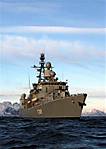Even white glue thinned with water would probably work

My name and possible relatives.
Swedish names ending with -son means son (male offspring).
In the old days the surname changed with each generation.
Example: Johan Andersson had three sons, Axel, Per and Karl.
The grandfather of the three boys was called Anders, the three boys would evenetually change their surname to Johansson
(Johans son where the extra 's' comes from the genitive).
Johan Anderssons grandsons would eventually become Xxx Axelsson, Yyy Persson and Zzz Karlsson respectively.
In the mid 19th century the state started getting fed up with this system where it was near impossible to keep track of which xxxxsson was related to what other yyyysson, especially since there was limited supply of boys first names. In any larger village or small town there would be a number of Anderssons which were not related to each other but rather the cousins of some Persson, Johansson and Karlsson.
In Ireland the O' fills a similar function but they at least keep it as a family name so it stays the same across generations (or so I have been told).
So what did the state do? They sent out officials to try and persuade the common people to change their surnames to something more permanent, for example Lundström or Ekberg. The system here was two nouns (Lund = very small forest, ström = stream (creek or smal river), Ek = oak berg = hill/mountain).
The agents would take a look at the premises and say something like: Oohh! Nice little hill with oaks you have got there my dear fellow, shall we make it Ekberg then?
Some of the population accepted and some didn't.
Then there were also the stubborn ones:
My grandfather was Johan Nilsson so my father Gustav grew up being a Nilsson, when my fathers elder brothers (3 of them) were old enough they decided that they wanted to be Johanssons instead so they went to the parish priest (the church did the bookkeeping until mid 1990's sometime) and had their surnames changed. When they came back home they told my father that he was now a Johansson, my father presumably used some profane language and went to the parish priest and told him that he had been born a Nilsson, grown up as a Nilsson and that he wanted to stay a Nilsson for the future as well. I would have been a Johansson turned Gustavsson otherwise

I did a quick check on a website which delivers information about persons over 18 years of age and there are currently 148298 individuals with Nilsson or Nilson as surname (some of them could have died in the last week or so and maybe some new ones have been born but the registers are reasonably up to date)
As for my first name, Robin. It was fairly unique when I was a kid (I turn 53 tomorrow) but in the early 1980's there was a tennis player, Björn Borg, who named his son Robin so suddenly the name was everywhere. I realised this when I heard my name called by a young woman whom I had never seen before. I almost said: 'What, You talking to me' before I realised she was calling her 3-4 year old son.
There was one more Robin in my hometown and today there are 24534 of us. There are 529 Robin Nilsson (exact spelling).
There is only 485 Robins in the ages 50 to 99 and 51 of us in the interval 52-53.
Some Irish colleagues at Ericsson got a big surprise (6'4'' with a 5 o'clock shadow) when they saw me the first time. We had only e-mailed before so they thought I was female like their colleague Robin

/ Robin






















































